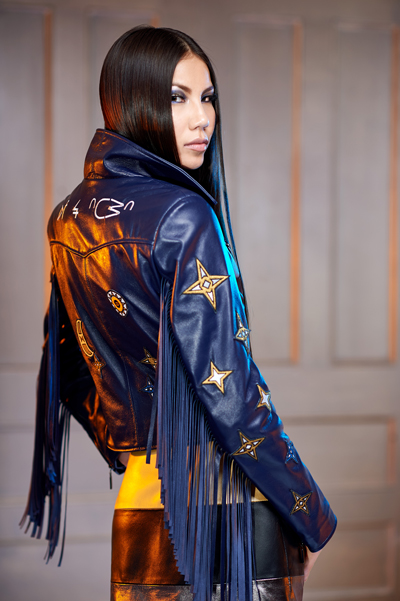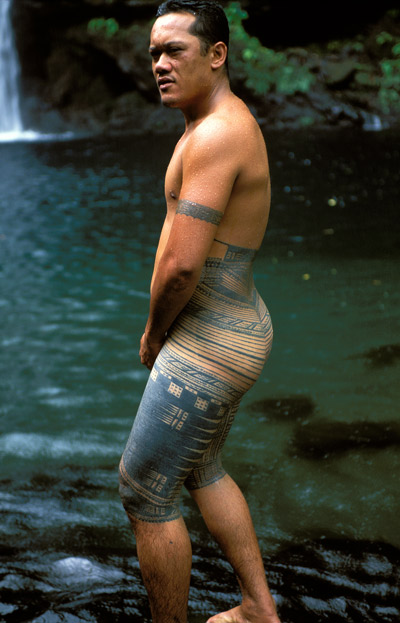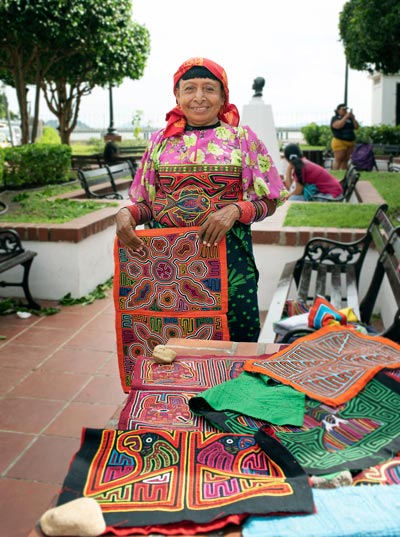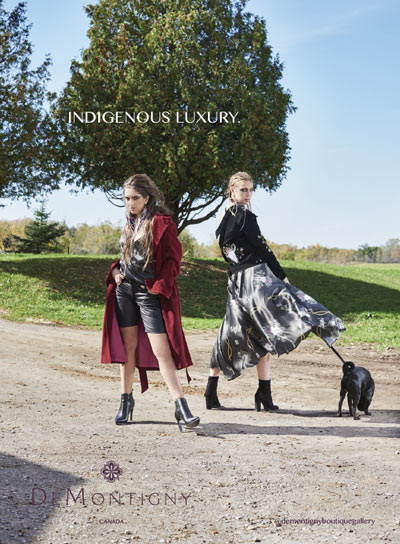
Curbing cultural appropriation in the fashion industry with intellectual property
By Brigitte Vézina, Intellectual property and cultural heritage law consultant, The Hague, Netherlands*

cultures for centuries, and today, the appeal of traditional designs with
an “ethnic” flair is as strong as ever. Jacket designed by Indigenous
fashion designer, Angela DeMontigny (photo: Courtesy of Marta
Hewson / Angela DeMontigny).
In the face of public uproar following countless accusations of cultural appropriation, the fashion industry is due to undergo a profound transformation. The world over, calls are being made for fashion designers to be mindful when borrowing from other cultures and to offer products that are respectful of their traditions. While the term “cultural appropriation” is shrouded in uncertainty, there is undoubtedly a role for intellectual property (IP) in curbing this harmful practice.
“Cultural appropriation” is a murky concept. It can be described as the act by a member of a relatively dominant culture of taking a traditional cultural expression and repurposing it in a different context, without authorization, acknowledgement and/or compensation, in a way that causes harm to the traditional cultural expression holder(s).
A culture of copying in fashion
Many instances of cultural appropriation can be explained, at least in part, by the fact that copying is so pervasive in the global fashion industry. While fashion design is marked by an astonishing level of creativity, imitation remains a major driver of the conceptualization process. Many commentators refer to this as the “piracy paradox,” in which fast-paced copying ensures renewed consumer demand for ever-changing designs. With new trends quickly trickling down from high-fashion to fast-fashion, designers tend to embrace a multicultural vision and resort to exploring an increasingly diverse range of cultural influences to come up with a stream of fresh and novel styles.
This is nothing new. Fashion designers have been borrowing stylistic elements from other cultures for centuries. Foreign influences on European fashion can be traced from the late Middle Ages. The development of trade with the Americas and Asia, notably via the Silk Road, brought refined fabrics and new-fangled clothing styles to wealthy merchants across the Old Continent. Fast forward to the early 1990s and designers are working up an appetite for all things traditional, ethnic or folkloric, incorporating patterns and motifs from Indigenous cultures into their creations. Today, the appeal of traditional designs is as strong as ever. The pages of fashion magazines are awash with clothing and accessories bearing a distinctively “ethnic” flair.
When drawing inspiration causes harm

of the traditions of other cultures when they borrow from them.
Unfortunately, designers sometimes take traditional cultural expressions,
such as the traditional Samoan male tattoo called pe’a (below), and
reuse them out of context in ways that disregard or misinterpret their
cultural significance and thereby cause great harm to the holders of
these expressions (photo: Alamy Stock Photo / © Horizons WWP / TRVL).
Unfortunately, designers sometimes take traditional cultural expressions and reuse them out of context in ways that disregard or misinterpret their cultural significance and thereby cause great harm to the holders of these expressions. Even where harm is unintentional, it can have drastic cultural, social and economic consequences. For example, in 2013, American sportswear company Nike printed patterns from the traditional Samoan male tattoo called pe’a on women’s workout leggings. Following a public outcry denouncing the disparaging and offensive use of pe’a, Nike withdrew the leggings from sale and officially apologized. More recently, in May 2019, Nike’s announcement to sell special edition “Air Force 1 Puerto Rico” sneakers adorned with mola patterns originating in the Guna culture of Panama (and wrongly attributed by Nike to Puerto Rican culture), was fiercely opposed by representatives of the Guna people. Once again, this led to Nike cancelling the launch of the sports shoes.
In truth, much traditional clothing is not simply functional or ornamental but is infused with meaning and is part of the identity of the Indigenous communities that use it. That is why copying designs without consideration for their underlying cultural significance can erode the identity of a whole community. Further, cultural appropriation often occurs as the backwash of colonization, and contributes to widening existing divisions and perpetuating patterns of historic dispossession and oppression. In addition, for many Indigenous peoples and local communities, making traditional clothes is a source of income; as such, cultural appropriation can wield a significant economic blow, undercutting the ability of communities to earn a living by displacing the sale of authentic products. For instance, in 2015, UK fashion label KTZ copied a traditional Inuit parka design onto a men’s sweater with a hefty price tag of over USD 700. After protest, KTZ removed the sweater from sale and apologized for the unintended offense, but did not offer any monetary compensation to the Inuit community that had developed the traditional parka design.
A complex policy and legal context

Panama (above), is infused with meaning and is part of the identity of
the Indigenous communities that use it. For many of these communities,
making traditional clothes is a source of income; as such, cultural
appropriation can undercut the ability of communities to earn a living
by displacing the sale of authentic products (photo: Alamy Stock
Photo / © Ida Pap).
Cultural appropriation sparks passionate debate because it arises in a tangle of multifarious policy and legal issues. To start, not all forms of cultural borrowing are undesirable. In multicultural societies, it is important to safeguard the principle of freedom of expression and not to hinder innocuous cultural exchanges and interactions. Therefore, curbing cultural appropriation in fashion does not amount to a total and un-nuanced restriction on all uses of traditional cultural expressions. A diversity of cultural influences is what makes fashion evolve and thrive, and a respectful interpretation of the world’s cultures can allow all cultures to mutually enrich themselves and bring about genuine benefits to society.
To add to the complexity, cultural appropriation is not universally defined by law and hovers in a gray zone where permissible inspiration slips into harmful appropriation. The concepts of misuse or misappropriation at the heart of the WIPO’s program of work on IP and traditional cultural expressions, which include the WIPO Intergovernmental Committee (IGC) negotiations on the protection of traditional cultural expressions, may or may not overlap with what is understood by “cultural appropriation,” depending on the scope of protection that WIPO’s member states may determine. Until that point, a great deal needs to be done to raise awareness among fashion designers and the general public to demystify the concept and to alert them to the harm that cultural appropriation can cause.
IP protection for traditional cultural expressions
Cultural appropriation is undoubtedly related to the fact that traditional cultural expressions maintain a jarring relationship with the international IP system. In the main, existing IP laws exclude traditional cultural expressions from protection and relegate them to the public domain, making them vulnerable to appropriation and undermining the customary laws and rules that regulate access to and use of them in a customary context. The WIPO document The Protection of Traditional Cultural Expressions: Updated Draft Gap Analysis offers a detailed examination of the shortcomings of IP law, particularly copyright, in effectively preventing the appropriation of traditional cultural expressions.

Angela DeMontigny, can be the most powerful voice for their own cultures.
Their contemporary creations present an authentic vision of their
traditional cultural expressions and cultural heritage
(photo: Courtesy of Marta Hewson / Angela DeMontigny).
Putting an end to cultural appropriation in fashion therefore requires a thorough examination of how IP law can be improved to better respond to the needs of the holders of traditional cultural expressions in terms of how their culture is represented by fashion designers. Against the backdrop of the United Nations Declaration on the Rights of Indigenous Peoples (Article 31), the international IP landscape could be reshaped to afford Indigenous peoples the legal means to exercise effective control over their traditional cultural expressions. The WIPO IGC is currently negotiating an international legal instrument to provide balanced and effective IP protection for traditional cultural expressions. Given the lack of respect and acknowledgment and the distortion of cultural meaning evident in cultural appropriation, extending moral rights to traditional cultural expressions is one avenue on which WIPO’s member states might focus.
Four principles for a non-appropriating behavior
Working within the present legal framework, fashion designers can engage with other cultures and use traditional cultural expressions without falling into the cultural appropriation trap by following four principles:
- Understanding and respect for the holders of traditional cultural expressions.
- Respectful transformation and reinterpretation of traditional cultural expressions.
- Acknowledgement and recognition of the holders of traditional cultural expressions.
- Engagement with the holders of traditional cultural expressions through requests for authorization and collaborative partnerships.
Examples of designers actively collaborating with holders of traditional cultural expressions are numerous. The Cruise 2020 collection presented by the French haute-couture house of Christian Dior in Marrakesh in April 2019, is a reflection of the growing awareness in fashion circles of the importance of respecting the world’s diverse cultures, but also demonstrates how the complexity surrounding cultural appropriation causes change to occur very gradually. The collection honored the creativity and skill of African creators of wax print fabrics made by Uniwax, a company based in Abidjan, Ivory Coast, one of the few fabric manufacturers still using traditional methods. The story of wax fabric is in itself a cultural voyage: while it is nowadays associated with and is emblematic of Africa, its origins are found in Indonesian batik brought to Africa many centuries ago by Dutch merchants. Dior designer Maria Grazia Chiuri told the press that the collection “proposed a dialogue between the Dior wardrobe and African fashion” and was her way of actively supporting African fashion and the tradition of wax fabric, which is under threat from cheap, digitally-produced copies.
Another illustration of such a dialogue between cultures is that of Canadian winter-clothing manufacturer Canada Goose. In January 2019, it launched a collection of exclusive parkas as part of its Project Atigi collection (Atigi means “caribou parka with fur inside” in Inuktitut, the language of the Inuit). The collection features the designs of one-of-a-kind traditional parkas from fourteen Inuit seamstresses from nine communities across the four Inuit regions – Inuvialuit, Nunatsiavut, Nunavut, and Nunavik. The bespoke parkas are unique and made using traditional skills and designs combined with modern Canada Goose materials. The proceeds are intended to benefit the national Inuit representational organization Inuit Tapiriit Kanatami.
Supporting Indigenous designers
Indigenous fashion designers can be the most powerful voice for their own cultures insofar as they present an authentic vision of their traditional cultural expressions through their contemporary creations. Cree-Métis designer Angela DeMontigny, for instance, creates modern fashion that celebrates her traditions and cultural heritage. Several IP tools are available to support Indigenous fashion creators’ tradition-based business endeavors. The WIPO publication Protect and Promote Your Culture: A Practical Guide to Intellectual Property for Indigenous Peoples and Local Communities is an example of such practical initiatives and aims to empower holders of traditional cultural expressions in harnessing IP for the benefit of their culture.
*The present article is drawn from the paper entitled Curbing Cultural Appropriation in the Fashion Industry, written by Brigitte Vézina and published by the Centre for International Governance Innovation (April 2019).
The WIPO Magazine is intended to help broaden public understanding of intellectual property and of WIPO’s work, and is not an official document of WIPO. The designations employed and the presentation of material throughout this publication do not imply the expression of any opinion whatsoever on the part of WIPO concerning the legal status of any country, territory or area or of its authorities, or concerning the delimitation of its frontiers or boundaries. This publication is not intended to reflect the views of the Member States or the WIPO Secretariat. The mention of specific companies or products of manufacturers does not imply that they are endorsed or recommended by WIPO in preference to others of a similar nature that are not mentioned.